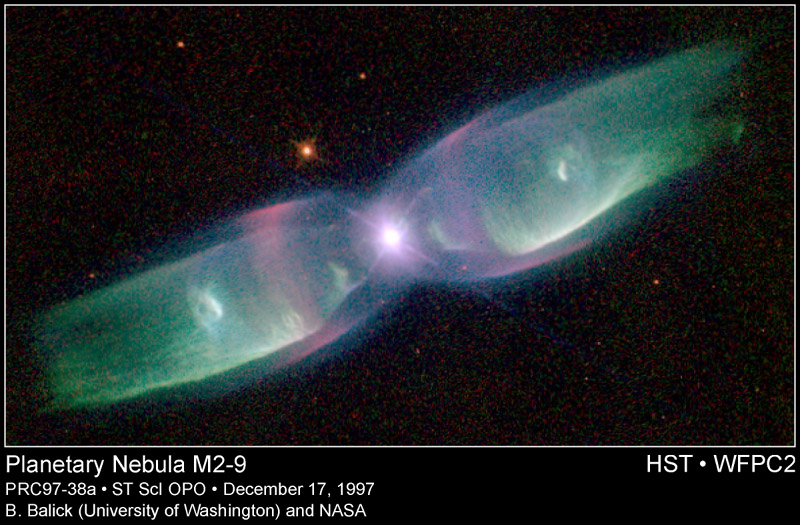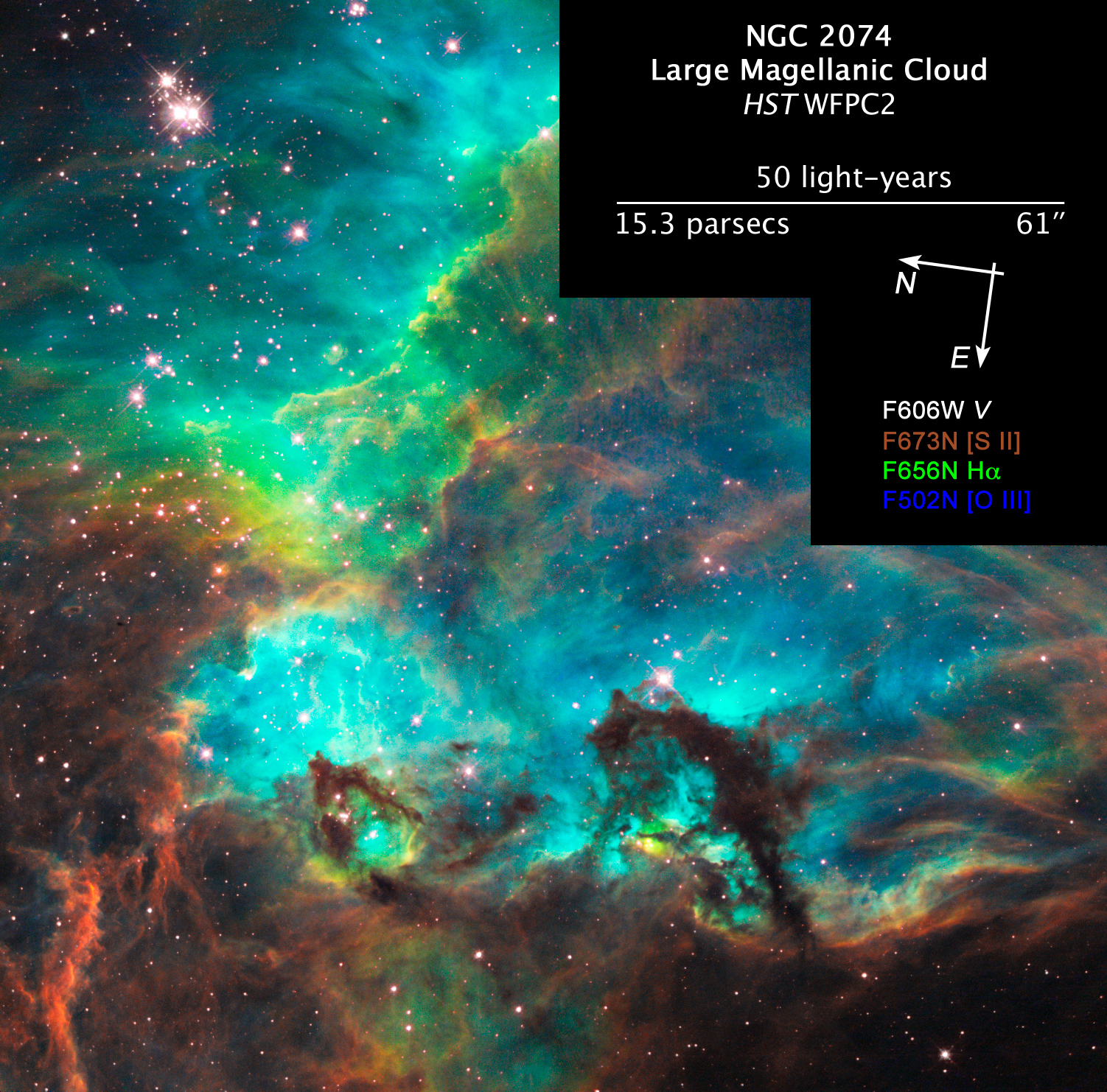Hauntingly Beautiful Hubble Images
Friday, May 9, 2014
Mystic Mountain
Mystic Mountain, released for Hubble’s 20th anniversary, reveals a landscape never before studied in such detail. These pillars show the telltale signature of new stars forming at their tips and strong jets of material being ejected into the interstellar medium for great distances. Many such features are seen in the Carina Nebula, a vast area of dust and gas in our Milky Way Galaxy. This is the most obvious and spectacular example, similar to others in an immense Hubble mosaic made a few years before.
Tuesday, June 14, 2011
A Star Formation Laboratory
The dwarf galaxy NGC 4214 is ablaze with young stars and gas clouds. Located around 10 million light-years away in the constellation of Canes Venatici (The Hunting Dogs), the galaxy's close proximity, combined with the wide variety of evolutionary stages among the stars, make it an ideal laboratory to research the triggers of star formation and evolution. This color image was taken using the Hubble Space Telescope's Wide Field Camera 3 in December 2009.

Image Credit: NASA/ESA/Hubble Heritage (STScI/AURA)-ESA/Hubble Collaboration
Monday, May 9, 2011
Composite Image of Messier 101 Spiral Galaxy
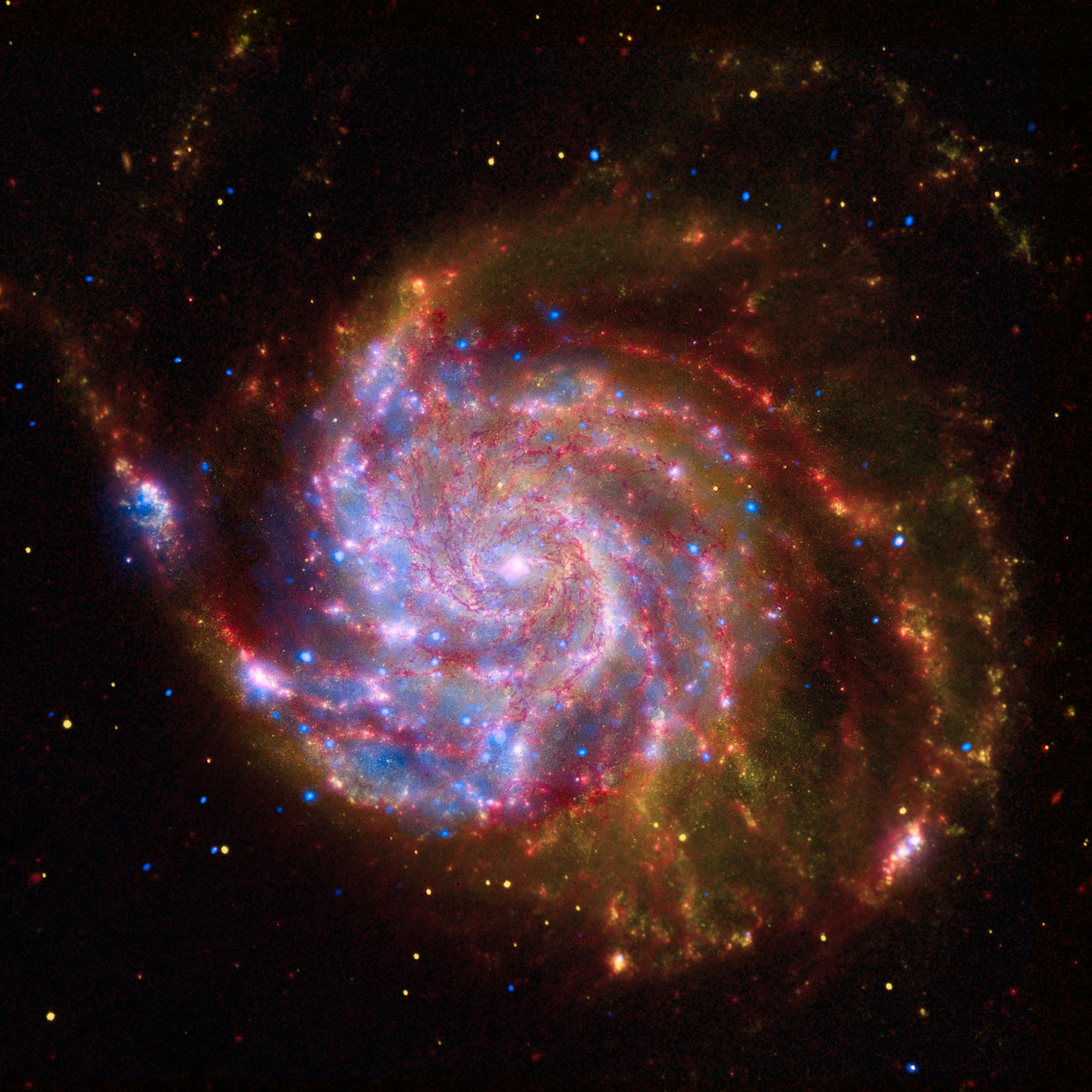
This composite image features views from the Spitzer Space Telescope, Hubble Space Telescope, and Chandra X-ray Observatory. Each wavelength features different aspects of celestial objects. By creating composites we can see new objects that could not otherwise be studied.
The red color comes from the Spitzer's view in infrared light. It highlights the heat emitted by dust lanes in the galaxy where stars can form. The yellow color is Hubble's view in visible light. The blue color indicates Chandra's view in X-ray light. Sources of X-rays include million-degree gas, exploded stars, and material colliding around black holes. Such composite images allow astronomers to see how features seen in one wavelength match up with those seen in another wavelength. It's like seeing with a camera, night vision goggles, and X-ray vision at the same time.
The red color comes from the Spitzer's view in infrared light. It highlights the heat emitted by dust lanes in the galaxy where stars can form. The yellow color is Hubble's view in visible light. The blue color indicates Chandra's view in X-ray light. Sources of X-rays include million-degree gas, exploded stars, and material colliding around black holes. Such composite images allow astronomers to see how features seen in one wavelength match up with those seen in another wavelength. It's like seeing with a camera, night vision goggles, and X-ray vision at the same time.
Rosette Star Formation

Located about 5,000 light years from Earth, this composite image shows the Rosette star formation region. Data from the Chandra X-ray Observatory are colored red and outlined by a white line. The X-rays reveal hundreds of young stars in the central cluster and fainter clusters on either side.
Optical data from the Digitized Sky Survey and the Kitt Peak National Observatory (purple, orange, green and blue) show large areas of gas and dust, including giant pillars that remain behind after intense radiation from massive stars has eroded the more diffuse gas. A recent Chandra study of the cluster on the right side of the image, named NGC 2237, provides the first probe of the low-mass stars in this satellite cluster. Previously only 36 young stars had been discovered in NGC 2237, but the Chandra work has increased this sample to about 160 stars.
The presence of several X-ray emitting stars around the pillars and the detection of an outflow -- commonly associated with very young stars -- originating from a dark area of the optical image indicates that star formation is continuing in NGC 2237. By combining these results with earlier studies, scientists conclude that the central cluster formed first, followed by expansion of the nebula, which triggered the formation of the two neighboring clusters, including NGC 2237.
Optical data from the Digitized Sky Survey and the Kitt Peak National Observatory (purple, orange, green and blue) show large areas of gas and dust, including giant pillars that remain behind after intense radiation from massive stars has eroded the more diffuse gas. A recent Chandra study of the cluster on the right side of the image, named NGC 2237, provides the first probe of the low-mass stars in this satellite cluster. Previously only 36 young stars had been discovered in NGC 2237, but the Chandra work has increased this sample to about 160 stars.
The presence of several X-ray emitting stars around the pillars and the detection of an outflow -- commonly associated with very young stars -- originating from a dark area of the optical image indicates that star formation is continuing in NGC 2237. By combining these results with earlier studies, scientists conclude that the central cluster formed first, followed by expansion of the nebula, which triggered the formation of the two neighboring clusters, including NGC 2237.
Tuesday, May 3, 2011
Butterfly Nebula
The Butterfly Nebula is only thousands of years old and is a central star of a binary system. The effect seen here is due to it's outer envelopes of gas being swept away in a strong stellar wind.
The remaining stellar core is so hot it ionizes the previously ejected gas, causing it to glow. The different colors of this planetary nebula are determined by small differences in its composition. This bipolar nebula will continue to shine brightly for only a few thousand more years, after which its central star will fade and become a white dwarf star.
The remaining stellar core is so hot it ionizes the previously ejected gas, causing it to glow. The different colors of this planetary nebula are determined by small differences in its composition. This bipolar nebula will continue to shine brightly for only a few thousand more years, after which its central star will fade and become a white dwarf star.
This image compares the quality of Hubble images. The image on the right was taken just after the Hubble telescope was launched. The one on the right shows the improvements achieved after the missions to repair and improve the telescope.

Tuesday, October 12, 2010
Lagoon Nebula
Located in the Sagittarius constellation, The Lagoon Nebula is a giant interstellar cloud and is documented as Messier 8 or NGC 6523. It was discovered by Guillaume Le Gentil in 1747. It one of the only two star forming nebulae that can bee seen by the naked eye from northern latitudes.
Heart of Lagoon Nebula
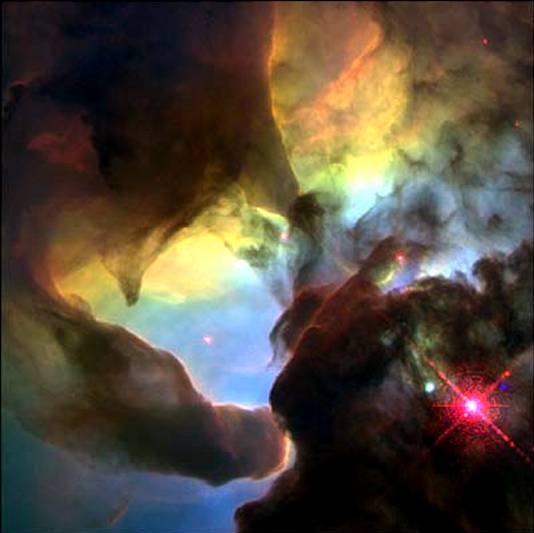
Approximately 4,000 to 6,000 light years from earth and is about 110 by 50 light years in size. It contains numerous Bok globules, which are dark, collapsing clouds of protstellar material.

It also contains a funnel shaped or tornado like configuration that is formed by a hot O Type star as it floods the area with ultraviolet light. This light heats and ionizes the gases on the surface of the nebula.

Sunday, October 10, 2010
Saturn
On February 29, 2009, The Hubble captured this image of all four of Saturn's moons as they passed in front of their mother planet. These transits are very rare and can be seen only when Saturn's rings are at a certain angle.
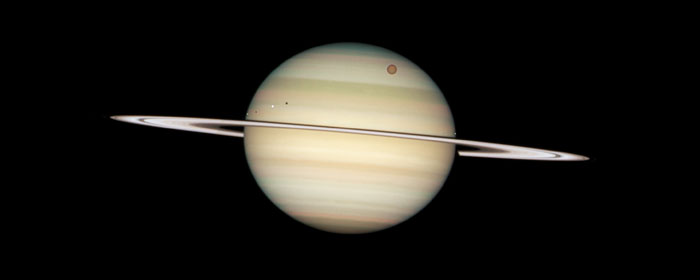
Italian Galileo Galilei, who is considered the father of astronomy, was the first to observe Saturn through a telescope in 1610.


Mars
The Hubble snapped this image of Mars about 11 hours before it made its closest approach to Earth, making it closer than it has been in 60,000 years. It is the most detailed image ever taken of Mars and reveals surface details as small as 17 miles in diameter. The Hubble also serves as a weather station to monitor the atmospheric changes on this volatile planet.

NCC 6751
NCC 6751 glows amidst the constellation Aquila and gets its beautiful colors from gases that were ejected from the hot star several thousand years ago. The star lost its outer gaseous layer which exposed its hot core. As a result, the ultraviolet radiation causes the gas to glow.

Galaxy M74
Bright knots of glowing gas light up the arms of spiral galaxy M74, indicating a rich environment for star formation. This galaxy is slightly smaller than our Milky Way.


Tarantula Nebula
The Tarantula Nebula contains a bright cluster of brilliantly massive stars called Hodge 301. This cluster is blasting material from supernovae into the surrounding nebula.

Eagle Nebula
The Eagle Nebula is a billowing tower of gas and dust that rises up from a heavenly nursery. This small piece of the Eagle Nebula is 57 trillion miles long!
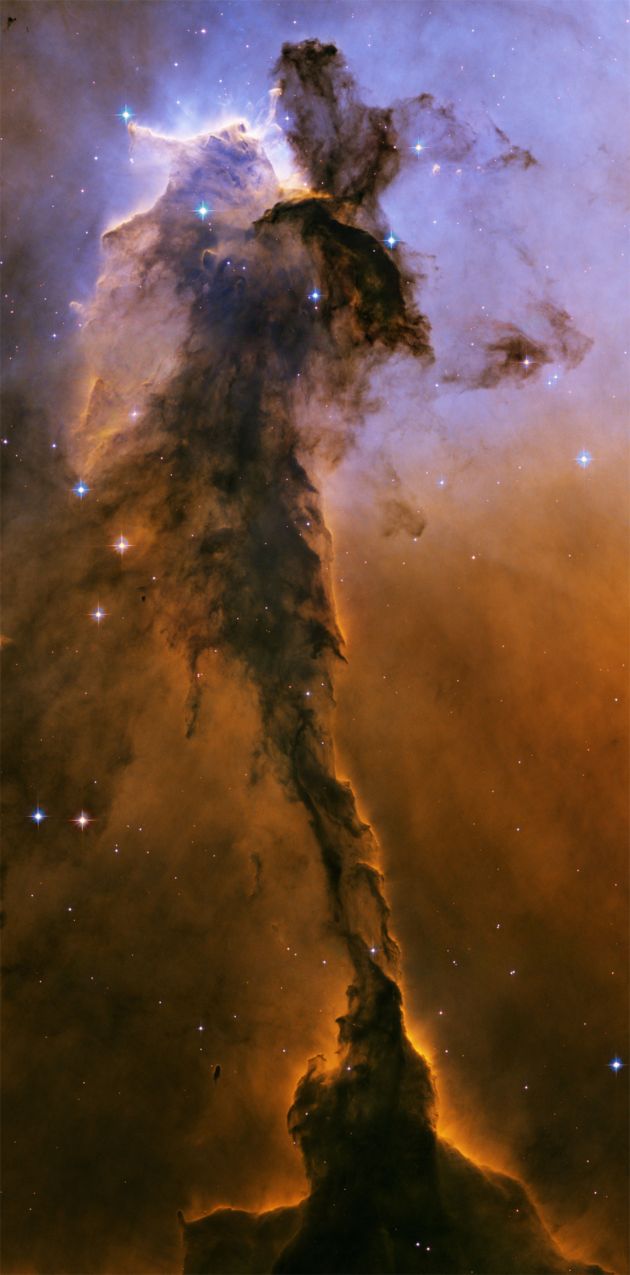

Galaxy ARP 274
Galaxy ARP 274 is another set of galaxies much like ARP 147. These two galaxies are perpetually intertwined in their movements.

Galaxy ARP 147
This pair of gravitationally interactive galaxies shows the effects of one galaxy passing through another. The blue shaped ring is what is left of one of them after the collision.

Crab Nebula
The Crab Nebula is actually a remnant of a supernova and contains a pulsating star in its center. A supernova is actually an exploding star. What makes this particular nebula so interesting is that it was observed and recorded by Chinese astronomers as early as 1045 AD.

Messier 81 Galaxy
The Messier 81 is one of the most conspicuous galaxies, it is 12 milllion light years from Earth and is one of the most striking examples of the classic grand design galaxy.
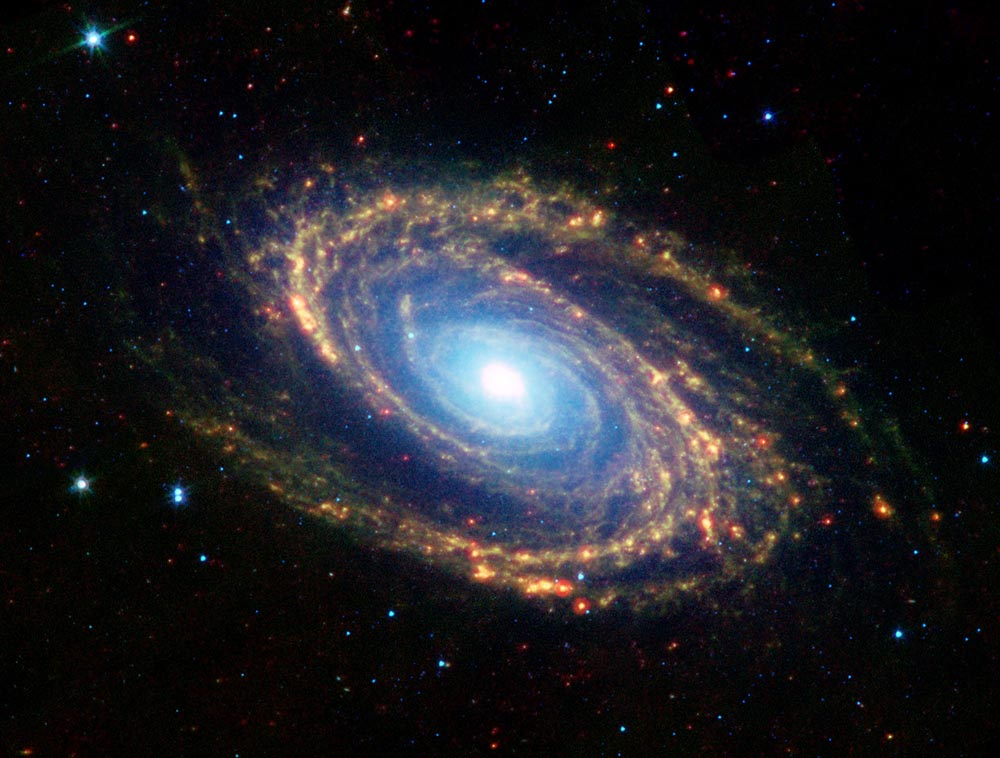
Subscribe to:
Posts (Atom)
Butterfly Nebula
(1)
Crab Nebula
(1)
Eagle Nebula
(1)
Galaxy ARP 147
(1)
Galaxy ARP 274
(1)
Galaxy M74
(1)
Lagoon Nebula
(1)
Large Magellanic Cloud
(1)
Mars
(1)
Messier 101
(1)
Messier 81 Galaxy
(1)
NCC 6751
(1)
NGC 4214
(1)
Rosette Star Formation
(1)
Saturn
(1)
Tarantula Nebula
(1)
See other gifts available on Zazzle.
Followers

Custom Search

